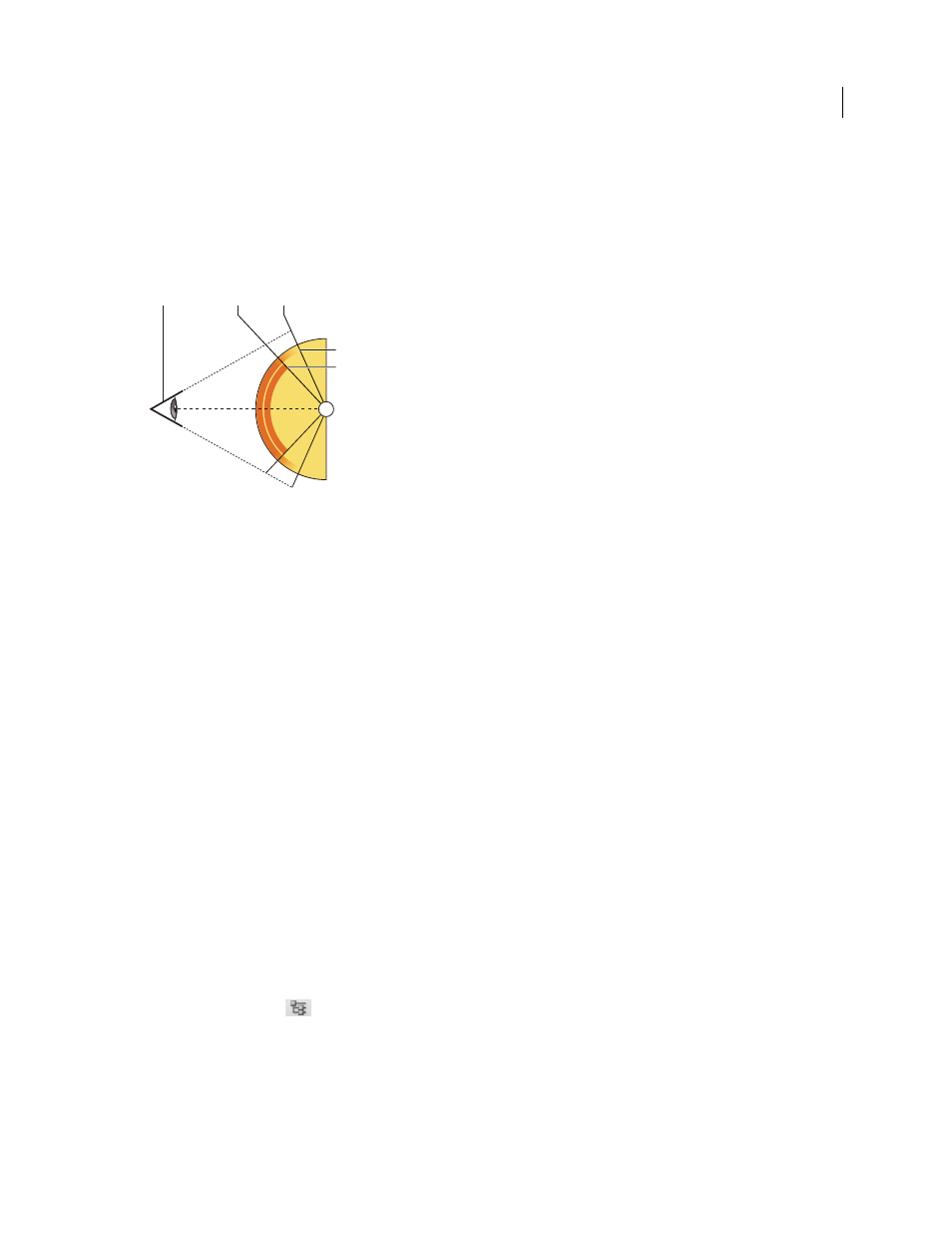Set the paint falloff angle, Identify paintable areas, Best receive paint. see – Adobe Photoshop CS4 User Manual
Page 602

595
USING PHOTOSHOP CS4
3D and technical imaging
Last updated 1/10/2010
Set the paint falloff angle
When painting on a model, the paint falloff angle controls how much paint is applied to a surface as it curves away
from the forward-facing view. The falloff angle is calculated based on a “normal”, or straight line projecting out from
the part of the model surface that faces you. For example, in a spherical model such as a soccer ball, the falloff angle to
the exact center of the ball as it faces you is 0 degrees. As the surface of the ball curves away, the falloff angle increases,
up to 90 degrees at the edges of the ball.
A. Eye/camera angle B. Minimum angle C. Maximum angle D. Paint fade start E. Paint fade end
1
Choose 3D > 3D Paint Falloff
2
Set the minimum and maximum angle settings.
•
The maximum paint falloff range is 0 - 90 degrees. At 0 degrees, paint is only applied to the surface if it is facing
directly forward, with no drop-off angle. At 90 degrees, paint can follow a curved surface such as a sphere to its
visible edges. At a 45 degree setting, the painted area is limited to the areas of the sphere that don’t curve away
at more than 45 degrees.
•
The Minimum falloff angle sets a range within which paint gradually fades as it approaches the maximum falloff
angle. For example, if the maximum falloff angle is 45, and the minimum falloff is 30, paint opacity decreases
from 100 to 0 percent between 30 and 45 degrees of falloff.
Identify paintable areas
It may not be clear just from looking at a 3D model whether you can successfully paint on certain areas. Because the
model view may not provide a 1 to 1 correspondence with the 2D texture itself, applying paint directly to the model is
different from directly painting on a 2D texture map. What appears to be a small brush on the model may in fact be
much larger in relation to the texture, depending on the resolution of the texture, or how close you are to the model
when applying paint.
Good paintable areas are areas where you can apply paint or other adjustments to the model surface with the most
consistent and predictable effect. In other areas, paint may be undersampled or oversampled due to your angle or
distance from the model surface.
❖
Do one of the following:
•
Choose 3D > Select Paintable Areas. A selection marquee highlights the best areas for painting on the model.
•
In Scene section
of the 3D panel, choose Paint Mask from the Preset menu.
In Paint Mask mode, white shows areas good for painting, blue shows areas where paint will be undersampled,
and red shows areas where paint will be oversampled. (To paint on the model, you must change from the Paint
Mask render mode to a render mode that supports painting, such as Solid.)
B
C
E
D
A